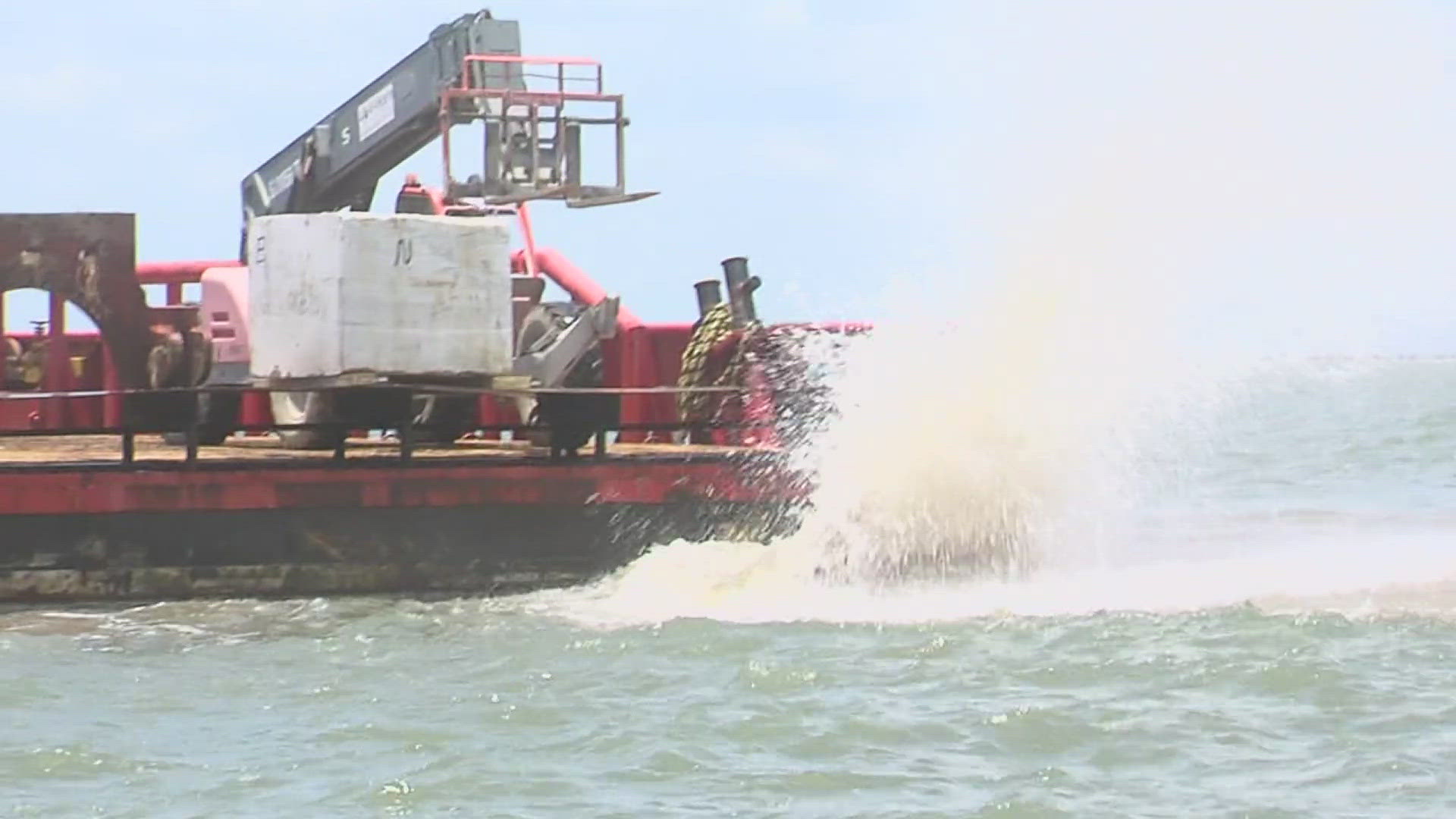SABINE PASS, Texas — On Thursday morning, the Texas Parks and Wildlife Department (TPWD) dumped a concrete block into the Gulf of Mexico as part of the new artificial reef that is being built.
The reef, named HI-54 Shallow, is being built about two miles off the coast by Sea Rim State Park in Sabine Pass. When completed, it will be 20 acres.
TPWD says that the artificial reef will be a win all around for the ecosystem.
"They're a win-win for everybody. They're a win for the resource, our different fish species. Different marine organisms that live there and the fish that feed off of those marine organisms," said Game Warden Captain Ryan Hall. "[It] also provides opportunities for fishermen to come out and enjoy a place that has good habitat in order to be able to harvest fish."
State officials say the reef is special because there's nothing else like it near our coastline.
"The structure grows marine vegetation which attracts bait fish that can hide in it and spawn, which attracts larger fish to come eat the fish. And then when there's larger fish there, fishermen have a better opportunity to harvest those, especially those game fish that anglers are out here after like your red drums, speckled trout," Hall said.
For boaters, officials say the waters are only 22 feet deep.
The state hopes their work can boost eco-tourism for generations to come.
This reef is part of a partnership between the TPWD Artificial Reef Program and the nonprofit organization Friends of Sabine Reef.
"The Gulf of Mexico’s sea floor is mostly comprised of a vast, featureless plain of mud and sand, and lacks natural reefs or structures for marine animals and plants to settle upon," according to the TPWD news release.
Artificial reefs like HI-54 Shallow help support an array of natural reef-like communities.
The reef was made possible from a donation from the Coastal Conservation Association and other partners’ donation of deployment materials. The materials used to build the artificial reef consists of obsolete concrete and metal pieces that would otherwise sit in a landfill and serve no purpose.
You can find more information about the new reef site, including it's coordinates on the TPWD website.

